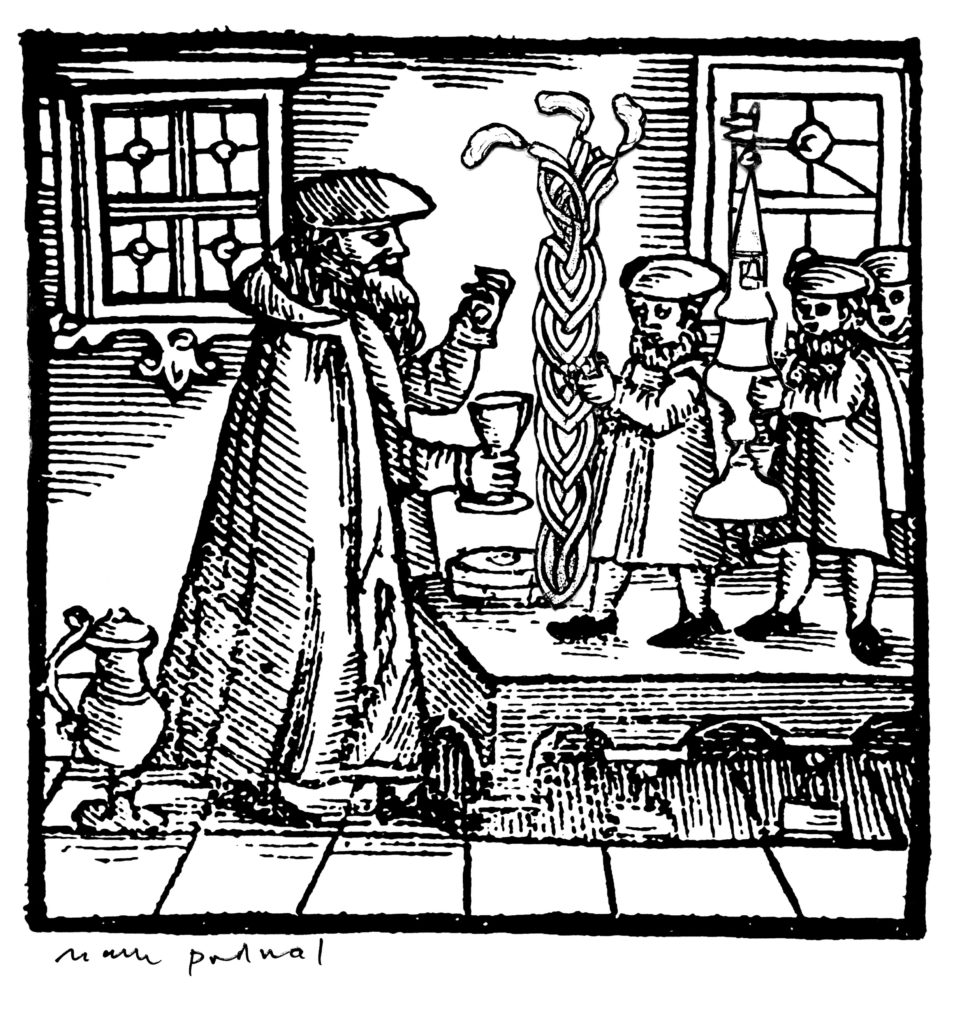Havdalah
Mark Podwal (b. 1945)
Digitial archival pigment print on paper
7 7/16 x 7 9/16″
USA, 2020
© Mark Podwal
Havdalah, Hebrew for “separation,” is the ceremony performed at the conclusion of Shabbat and festivals marking the passage from the sacred to the everyday. Blessings are recited over a cup of wine, a lit braided candle, and spices. The blessings refer to the distinctions between the holy and the ordinary, between light and darkness, between the people Israel and the other peoples of the earth, and between the seventh day of rest and the six days of work. The havdalah candle must have multiple wicks, or be fashioned from multiple candles’ wicks joined together, because the blessing itself is in the plural, “Who creates the lights of fire.” The custom to look at the fingernails in the light of the havdalah candle is based on the Mishnah, or commentary on the Torah, which says one may only recite a blessing over a havdalah flame if there is benefit from the light of the flame. By using the light to distinguish between fingernails and the surrounding skin, the light is being used.
One rabbinic source describes an additional soul given to man by God on the eve of Shabbat and withdrawn at its close. An explanation for the use of spices at the havdalah service is that with the departure of the additional soul, it is necessary to strengthen the faint remaining soul, as if with smelling salts. Containers for the spices have been fashioned from a wide assortment of forms. Among the most popular, deriving from the Middle Ages, is a box in the shape of a fortified tower. At the conclusion of havdalah, the leftover wine is poured into a small dish and the candle is extinguished in it, signifying that the candle was lit solely for the commandment of havdalah.

